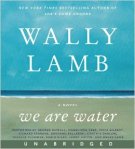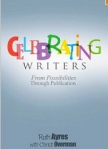If you are looking for a professional book to read this summer, read on. I recently finished a new one from Stenhouse called Who’s Doing the Work: How to Say Less So Readers Can Do More by Burkins and Yaris. There were many wonderful parts of the text that reiterated some of my firm beliefs about teaching reading. I’ll list some in this post and, hopefully, ignite your interest.
I totally agree with the basic premise that as teachers we have to monitor ourselves so that we do not take on work that the students are capable of doing themselves. The authors use the four instructional contexts of reading aloud, shared reading, guided reading, and independent reading to show us how to let students take more control of their developing reading processing systems. Burkins and Yaris also make a strong case against the ‘leveling frenzy’ saying that some teachers are “blinded by levels,” not being able to see past levels to what the child can actually do as a reader.
In chapter 2, the authors emphasis the benefits of reading aloud to children calling the read aloud time a “commercial for reading.” We should be setting kids up to want to be readers. Several classroom examples are given which show how students can participate in negotiating the meaning of the text.
Chapter 3 emphasizes the importance of shared reading with students. I was reminded of something Regie Routman always says — that she does most of her teaching through Shared Reading experiences, where the students can all see the text. Yaris and Burkins expand the meaning of shared reading beyond what some teachers may think of as only K-2 teachers reading Big Books and poems together with their students. They feel that if we did more shared reading experiences in grades 2-5, students would be more equipped with strategies and behaviors to use during guided reading when each child is in the role of the reader. “Shared reading allows students to experience reading a more difficult text in a supportive, meaningful context.” (p. 65.)
In the guided reading chapter, the authors remind us that the teacher must step back and let the students do the work as they problem solve words and make meaning of texts. I love that they call guided reading “independent reading’s dress rehearsal.” During these small group sessions, the teacher can see how students “apply all of their knowledge about how to read” while she is still there to intervene or support when necessary. Just as Terry Thompson says in his book on scaffolding, these authors remind us to “resist the urge to jump in and prompt heavily as soon as students have difficulty.”(p. 93.) Kids should feel safe enough in guided reading to take the time to try different strategies to resolve problems.
One major point of the whole book is that we should always be teaching towards the end goal of developing lifelong readers who CAN and DO read for pleasure and for information. The independent reading time is when students have plenty of class time to read books of their own choosing, books that match their interests and their abilities, without being restricted by a level number or letter. “If teachers micromanage independent reading time, they limit students agency and engagement and, consequently, limit the amount of work students do.” (p. 111).
Early in the book (p. 28), the authors suggest we reflect on what we, the readers of this text, agree with and what we disagree with. To me that means that they encourage professional discussion on various topics, so I feel OK in mentioning two points that I question (‘disagree” being too strong a word).
- There is recurring mention throughout the text that ‘book introductions involve the teacher doing too much for the students.’ I tend to agree with Clay who says that students are “entitled to a book introduction.” I support the use of book intros (when done correctly) especially for students reading at beginning primary levels, K-2. I agree with these authors who worry that some teachers have misunderstood the concept of a book introduction and prime the students with too much information or pre-teach words. I also agree that a good book intro is NOT a page-by-page book walk. Katie and I present our views of book intros on pages 78-80 and 127-130 in Catching Readers Before They Fall. I’d also like to suggest that teachers look for a new book coming from Stenhouse within the next year on Book Introductions (no title yet) by authors Fay, Whaley, and Moritz. I think that book will help clarify any questions teachers may have.
- My other concern relates to the way that word solving is described in this text. Though the authors mention Clay and her three sources of information: meaning, structure, and visual information – they decide to combine two of those and only explain the Meaning and the Print aspects. I find this a bit misleading for teachers, however, I can understand that they were trying to simplify it for their readers. Again, the new book coming soon from Stenhouse will address the structural source of information.
I hope my last two points don’t discourage anyone from reading this book because it is a valuable text. Rather, I included them so that all teachers will read with a reflective stance. We should always think and reflect on what we read in any professional text.








